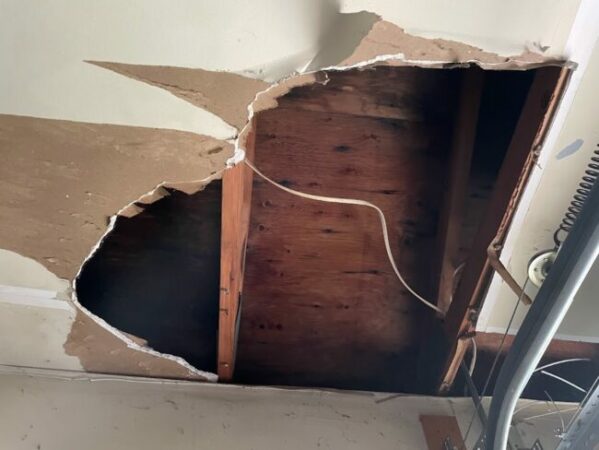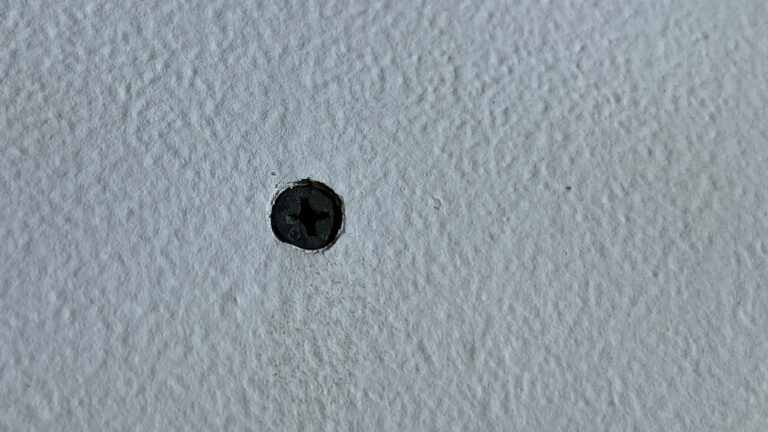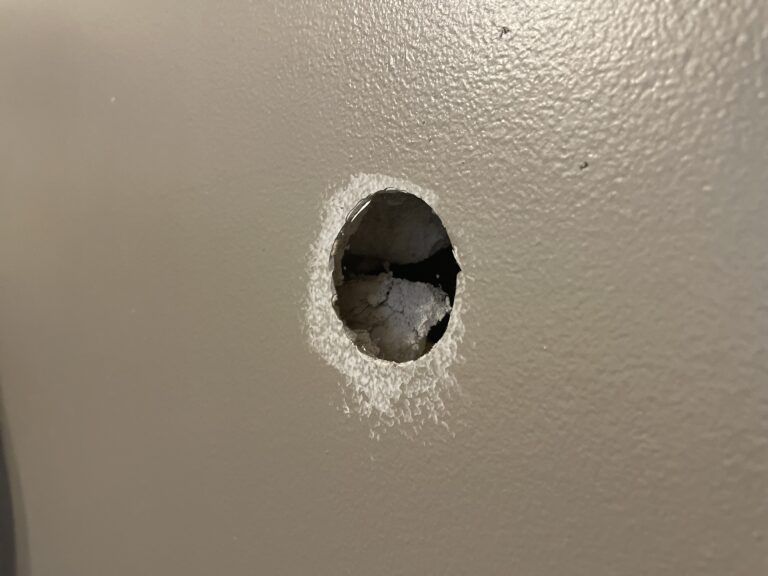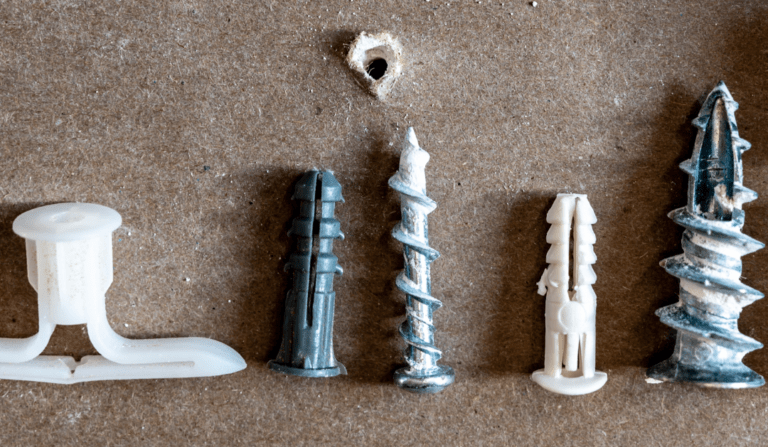Drywall Damage 101 – The Causes Made Simple
What Causes Drywall Damage In Your House?
A better understanding of drywall damage will help you prevent problems before they occur. Drywall is the most common material for insulating and finishing the inside walls of buildings.
Drywall damage can happen for many reasons, and pests, water damage, and other causes are all considered drywall problems. Let’s take a detailed look at what causes drywall damage in your house.
Common Causes Of Drywall Damage
Drywall damage can occur due to several reasons. Here are some of the most common reasons:
Leaks
Leaking pipes and plumbing are among the most common causes of drywall damage. If you leak, it will cause water to leak into your walls and ceiling. Leaks can cause mold growth which damages drywall. Leaks are also hazardous because they can cause electrical malfunctions that could result in fire.
Impacts
If you hit a wall with something heavy enough, such as a baseball bat or even another person, it could cause damage to your drywall. This type of impact could break through your drywall and cause holes or cracks that need repair work done on them immediately before they get worse. If you don’t want any damage done to your drywall, make sure that nothing heavy falls on it or slams into it when opening doors or closing drawers in cabinets. This can cause dents and scratches, making the wall look ugly and damaged over time.
Termites
Termites are another common cause of drywall damage that homeowners should watch for. While termites don’t eat through drywall directly, they feed on wooden studs and other materials within walls — including laths (supporting strips) and plaster — which makes them an indirect cause of drywall damage.
To prevent termite infestations, keep your property clean and clear from debris and clutter where they could hide. Do this by cleaning up fallen leaves from around your house every fall and winter; keeping gutters clean so water doesn’t collect in them; trimming back trees that border your property, and removing any branches hanging over roofs or porches so they won’t collect water or give termites an easy way into the home.
Foundation Settling
Foundation settling is one of the most common causes of drywall damage. When a home settles, the foundation has shifted, causing cracks in the drywall. When the house settles, any water in the soil can seep into the foundation and cause damage to your home’s structure and wiring. Foundation settling can be caused by several factors like tree roots or a lack of proper drainage around your home.
Popping Nails
When you hammer nails into the wall, they may pop back out after being pounded in once or twice. This happens because the nail could be too long for the thickness of the drywall, or it may not have gone all the way through. You will want to take out these nails before they start damaging anything else around them or even cause a fire by shorting out electrical wires behind them.
Joint Tape Loosened
Joint tape is the adhesive applied between drywall sheets to keep them from shifting during installation. Over time, this tape can come loose and allow the edges of adjacent sheets to separate and create gaps that allow air to penetrate your wall system. This can lead to condensation on interior walls and an increase in energy costs due to the poor insulation qualities of drywall.
Tile Removal Damage
When removing tile from the wall, especially if you are doing so by hand, there is a chance that you will cause some damage to the drywall. Tile removal requires you to use heavy equipment and crowbars to break off pieces of tile from the wall. If you do not take care when doing this, you could end up damaging the drywall on purpose or accidentally during your work process.
How To Inspect Drywall Damage In Your House
When inspecting your drywall for signs of damage, there are several things you should look for. The first thing you should do is check the surface of your walls. Look for any cracks or holes in the drywall that may have occurred during installation or afterward through an accident or storm damage. Next, try to apply light pressure against the drywall using your hands. Does the drywall flex? Does the drywall crumble? Or are you able to push your finger through the drywall?
If you answered yes to any of these questions, it’s a good sign that you have something going on inside the wall. If you do not feel comfortable doing a drywall repair yourself, you can always hire a trusted contractor in your area.
How To Prevent Drywall Damage In Your House
Drywall has come a long way in recent years, with advances in materials and techniques leading to improved durability and long-lasting performance. But even the most durable drywall can be damaged by moisture or water damage if it isn’t installed correctly or maintained regularly. Here are some tips for preventing drywall damage in your house:
Keep the humidity levels in your home in check
One of the biggest causes of drywall damage is high humidity levels. Since gypsum plaster is hygroscopic, it absorbs moisture from the air when humidity levels are high and releases it when humidity levels are low — which means that any small amount of water can cause permanent damage over time. Using a dehumidifier in areas with high humidity levels (such as bathrooms) will help prevent this damage.
If you have spotty areas of high humidity due to leaks or other problems, use a portable dehumidifier to dry out those areas while they’re being repaired, so they don’t get damaged again later on.
Sand Them
Sanding down paint-covered areas is one of the easiest ways to restore your walls’ integrity. Simply brush away loose paint chips and then sand down any remaining spots with fine-grit sandpaper before repainting them with primer or sealer.
Dust Them
Dusting off surfaces before painting them helps keep dirt from building up between coats of paint — which can lead to cracks or peeling later down the road if left untreated. Make sure you use a soft cloth when dusting so as not to scratch your walls’ surface (or use a synthetic duster instead).
Keep your home temperature consistent
Drywall is sensitive to extreme changes in temperature, as well as moisture. If you live in an area that gets very hot or cold, use window treatments and insulation to keep your home’s temperature consistent. Additionally, colder temperatures can cause moisture to build up inside walls and ceilings, which leads to mold growth. If you’re away from home during the winter months, make sure you have someone come by to check on your property at least once a week and keep an eye out for any signs of moisture or mold.
Conclusion
To prevent damage, it’s essential to know the most common sources of damage. That way, you can more easily fix the problem before it becomes more serious. The best way to prevent drywall damage in your house is to hire a trusted contractor. Finding a reliable contractor that does quality work, has positive reviews, and has low prices is essential. If you worry that your contractor is not trustworthy, consider hiring a second opinion. While second opinions can be costly, they could be worthwhile if you want to avoid dealing with the same issues soon.





